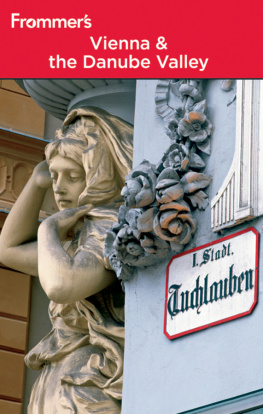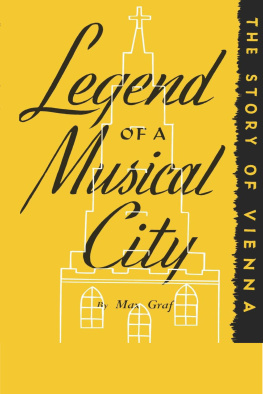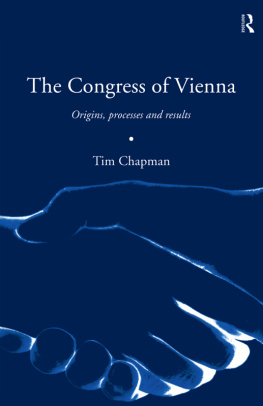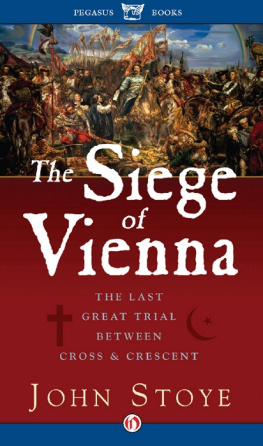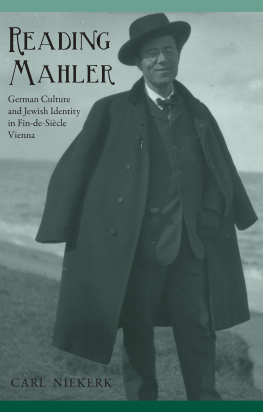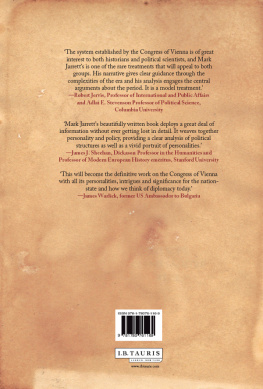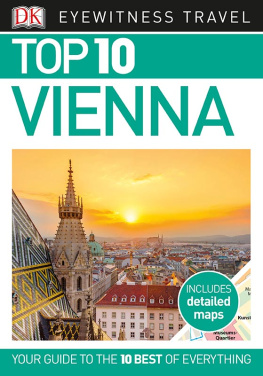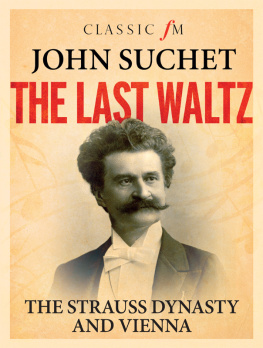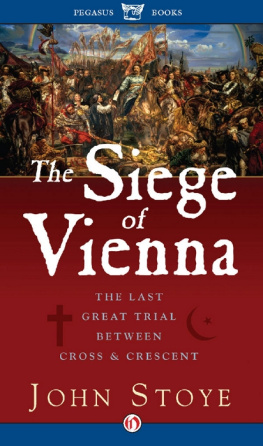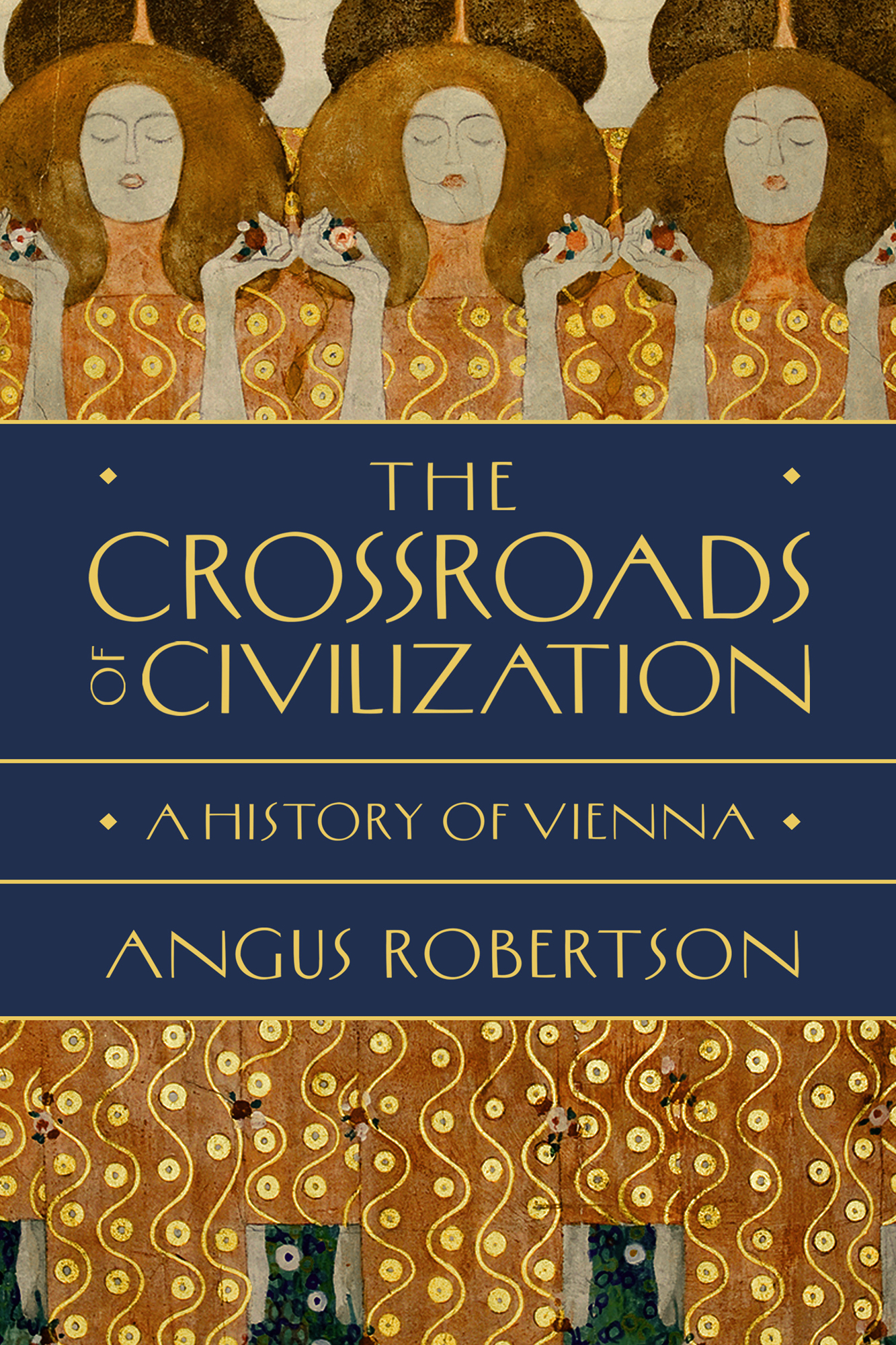Contents
Guide
The Crossroads of Civilization
A History of Vienna
Angus Robertson
THE CROSSROADS OF CIVILIZATION
Pegasus Books, Ltd.
148 West 37th Street, 13th Floor
New York, NY 10018
Copyright 2022 by Angus Robertson
First Pegasus Books cloth edition August 2022
All rights reserved. No part of this book may be reproduced in whole or in part without written permission from the publisher, except by reviewers who may quote brief excerpts in connection with a review in a newspaper, magazine, or electronic publication; nor may any part of this book be reproduced, stored in a retrieval system, or transmitted in any form or by any means electronic, mechanical, photocopying, recording, or other, without written permission from the publisher.
Jacket design: Brock Book Design Co., Charles Brock
Cover painting: Detail of Beethoven Frieze: Paradise Choir by Gustav Klimt, 1902
Author photograph: Peter Dibdin
ISBN: 978-1-63936-195-3
Ebook ISBN: 978-1-63936-196-0
Distributed by Simon & Schuster
www.pegasusbooks.com
Picture credits
Plate section 1
Upper Keystone/Getty Images, Lower Imagno/Getty Images
Plate section 2
Top Alexander Kazarin/Shutterstock, Middle mauritius images GmbH/Alamy Stock Photo, Bottom Bernhard Ernst/Shutterstock
Introduction and Acknowledgements
This book focuses on Vienna as an international capital, a city that has been a pivot for diplomacy, culture, intellectual thought, music, art, design and architecture for hundreds of years.
Three high-profile funerals in the Austrian capital over the three last centuries illustrate the passing of different ages during this period. Charles-Joseph, 7th Prince de Ligne, died in December 1814 at the height of the Congress of Vienna, not long after famously saying: The Congress does not move forward, it dances. One of the greatest characters of the age, he was a personal friend of the major figures of the 18th century, including the Austrian-born Queen Marie Antoinette of France, Tsarina Catherine the Great of Russia, King Frederick the Great of Prussia and Austrias Emperor Joseph II, as well as the leading thinkers and authors of the age, such as Rousseau, Voltaire and Goethe. Charles-Josephs funeral on the Kahlenberg hill overlooking Vienna marked the passing of the ancien rgime.
One century later, the funeral took place of Emperor Francis Joseph I, one of the longest-serving sovereigns anywhere, who reigned over Europes second largest country from the 1848 revolutions to the First World War. In many ways his funeral in 1916 signalled the end of the Habsburg Monarchy, which had ruled for more than 600 years. Within two years the Austro-Hungarian Empire collapsed in defeat and disintegrated into eight successor states.
Almost another century later was the funeral of Francis Josephs grandnephew, Otto Habsburg, the last ever heir to the throne. In a packed St Stephens Cathedral in 2011, the old imperial anthem rang out and the Guard Battalion of the Austrian army followed the coffin in a procession through Vienna city centre. As the successors to the old imperial Trabanten Lifeguards, they marched behind its flag, proudly wearing insignia with the black eagle of the Austrian Republic superimposed on the golden eagle of the Habsburg Empire.
The timing and symbolism of all three Vienna funerals tell their own story about the preceding centuries, and how this city has played a central role in the events that have marked these ages. Vienna has been at the crossroads of European civilisations, continental trading routes, cultural developments and power relationships for more than two millennia. This began with the foundation of the Roman outpost of Vindobona, which developed over the centuries into the city we know today as the Austrian capital, especially since it became the city of residence for the up-and-coming Habsburg rulers in 1440.
For six centuries the blossoming of Vienna into a first-order international capital has been associated with the dynasty. Habsburg history is in both the particular and the general sense not national but European history. From its earliest origins the family was entrusted with the task of resolving the tensions between west and east, north and south. In their successes and frustration, the Habsburgs laid up an enormous store of European experience a parallel to the collections of treasures created by artists all the European nations and put together by the connoisseurs of the family during the course of the centuries.
By 1600 the Holy Roman Empire was firmly in the grip of the Habsburgs, ruling from the Hofburg palace within Viennas city walls. The empire had the largest population in Europe; it was bigger than France, Russia, Spain or England. With 50,000 people, Vienna itself still had a relatively small population compared to the likes of London, Paris and Moscow, but it held a key position as the dynastic hub of central Europe. In other countries dynasties are episodes in the history of the people; in the Habsburg Empire peoples are a complication in the history of the dynasty. The Habsburg lands acquired in time a common culture, and to some extent, a common economic character: these were the creation, not the creators, of the dynasty. No other family has endured so long or left so deep a mark upon Europe: the Habsburgs were the greatest dynasty of modern history, and the history of Central Europe revolves round them, not the other way round.
Vienna was a melting pot of nationalities from across central Europe and beyond, with visitors struck by its polyglot population and its burgeoning cultural scene, which attracted the finest composers, performers and artists from near and far. The city was also the Christian bulwark against two Turkish sieges, leading Catholic resistance to the Reformation and opposition to revolutionary and Napoleonic France. Bonapartes foreign minister, Charles Talleyrand, stressed to Napoleon why Viennas regional and international role was of such importance: Your Majesty can now eliminate the Austrian monarchy or re-establish it. But this conglomeration of states must stay together. It is absolutely indispensable for the future well-being of the civilised world.
Over the course of 20 years of warfare, Austria provided the most consistent continental opposition against revolutionary and Napoleonic France. Despite numerous defeats across Germany, Bohemia and Italy, the Habsburg forces continued to fight, handing Napoleon his first personal battlefield defeat at Aspern-Essling on the outskirts of Vienna. In the greatest battle before the First World War, an allied army under Austrian command took to the field at the Battle of Leipzig: half a million men from across Europe took part in this Battle of the Nations, where Napoleon met his real Waterloo. It took the Congress of Vienna to re-establish peace and stability across the continent.
During the 19th century, Vienna quadrupled in size to become one of the largest cities in Europe; the city walls were replaced by a wide boulevard around the old town centre, which became home to some of the grandest and finest buildings on the continent. While Austrias political relevance began to be eclipsed by the rising power of Prussia and a unified Germany, it remained one of the great powers. This ended with defeat and collapse in the First World War, a development that was even lamented by foes such as Winston Churchill, who described it as a cardinal tragedy: For centuries this surviving embodiment of the Holy Roman Empire had afforded a common life, with advantages in trade and security, to a large number of peoples none of whom in our own times had the strength or vitality to stand by themselves in the face of pressure from a revivified Germany or Russia The noble capital of Vienna, the home of so much long-defended culture and tradition, the centre of so many roads, rivers and railways, was left stark and starving, like a great emporium in an impoverished district whose inhabitants have mostly departed.


